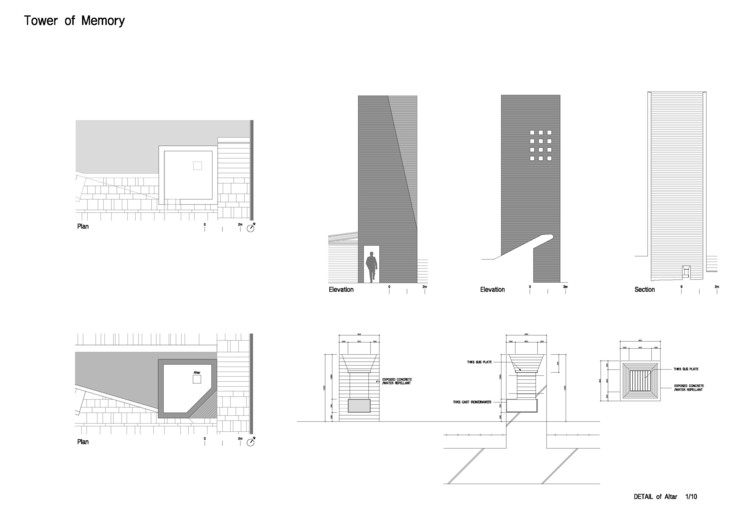
-
Architects: IROJE Architects & Planners
- Area: 18860 m²
- Year: 2016
-
Photographs:JongOh Kim
-
Lead Architects: Seung H-Sang

Text description provided by the architects. This architecture represents a facility for the dead. Being a place where ten thousand lives are gathered in the name of death, it is a community and city of the dead. So I decided to design the whole architecture as a complete set of required facilities for a city.

With the city located on a slope, it was a rule to make each individual shelter follow the format of a terraced house. Due to grasses covering the roof of houses below, the front side of each terraced house is an independent territory. From a bird’s eye view, the whole place looks like a unique park completely covered with green space.

A gathering of terraced houses in appropriate sizes represents a small community, connected to other communities through paths on the slope or steps. Shared facilities including small parks and squares as well as the sanctuary of each community are located at the joint between the communities.

The main square for the city is located at the bottom entrance. With its floor covered by water and surrounded by high walls made of weathering steel, this place eventually tells its visitors that it is a new city of silence.

To think of it, graveyard is not a place for the dead. A human being consists of four things: body (體), flesh (肉), soul (靈), and spirit (魂). While body and flesh become a corpse and usually buried in a grave, they dissipate and cease to exist in the end. When incinerated, they are merely a symbol and cannot witness the existence of body and flesh of the person.

Soul, which represents human mind, emotion, and passion, also goes extinct at the point of death. Spirit is the only thing that survives death: it is an unconstrained being that freely comes in and out of human body from the first place. However, once a soul loses its body and flesh that belong to this world, it cannot remain in the grave and ousted to another world.

Here is a poem that is said to have been originated from a song of wise Indians, A Thousand Wind.

“Do not stand at my grave and weep
I am not there. I do not sleep.
I am a thousand winds that blow.
I am the diamond glints on snow.
I am the sunlight on ripened grain.
I am the gentle autumn rain.
When you awaken in the morning's hush
I am the swift uplifting rush.
Of quiet birds in circled flight.
I am the soft stars that shine at night.
Do not stand at my grave and cry;
I am not there. I did not die.”

What the poem says seems to be right. It is not the dead who dwell in a graveyard: it is our memory of the deceased that lingers there. We should define graveyard as a place and scenery where we bring back the memory of the dead and look into ourselves, not as a place for the dead. Therefore, visiting a graveyard or having it nearby is about ensuring the authenticity of our lives. So I proposed this architecture as scenery of the very moment at a place where we visit to remind the beauty in human life in solemn silence whenever we are in doubt of our identity.
- Seung H-Sang



















